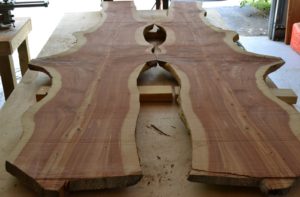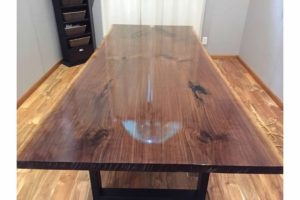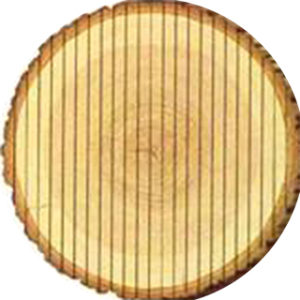Milling, Rough Cut
Milling or Rough Cut refers to the process of taking a log and cutting it into boards of varying thickness (or all the same thickness). Milled boards are also referred to as “rough cut” lumber.
Rough cut thickness should be approximately 1/4″ thicker than the desired finish thickness in order to account for shrinkage from drying process as well as the planing process.
For example, if the desired thickness is 3/4″ thick boards you would rough cut a 4/4 (four quarter) thickness. For a 1″ finished thickness you would rough cut at 5/4 (five quarter) thickness.
Kiln Drying
Kiln Drying is the process where recently milled (rough cut) lumber is dried in order to reduce the moisture content. Taking the wood to 140 degrees, kiln drying also kills insects, bugs, and ants in the process of reducing the moisture content down to around 8%.
Thickness Planing
Thickness Planing is the process where the planer smooths out lumber and at the same time reduces the board to the desired thickness.

Book-matching or Book-matched Boards
Book-matching is when wood is milled specifically so that two adjoining board surfaces mirror each other giving the impression of an open book. The two adjoining surfaces are produced from the same piece of wood, so that they have almost the exactly the same appearance, but mirrored. The final effect varies with the figure of the wood chosen and can range from extremely subtle (so that the two surfaces almost appear to be a single piece of wood), to dramatic effects with wavy grain showcased.
We are often asked to produce book-matched boards for our customers. During milling we keep track of and even number the boards to produce book-matched boards. As you can see in the example photos, the effects can be dramatic.
Examples of book-matched Lumber:


Live Edge, Natural Edge, or Waning Board Cuts
Live Edge refers to lumber used in a project where the outer edge of the tree, or in some cases even the bark itself, is not removed from the board but instead the natural beauty of the entire board is integrated and emphasized.
The lumber is milled, kiln dried, and planed as usual. But the long edge of the board is not cut to any specific width or altered in any way.
Example of a live edge walnut table, and live edge slabs:


Quarter Sawn vs Flat Sawn Milled Lumber
Quarter-Sawn Lumber is where the log is first cut into quarters or halves through the center of the log. These cuts produce planks where the tree’s growth rings are perpendicular to the plank’s surface producing a straight, linear grain pattern.


Flat-Sawn Lumber, also called plain sawn lumber, refers to milling the log in one piece with each board parallel to the next. Flat sawn boards show more of the face grain of the board.


